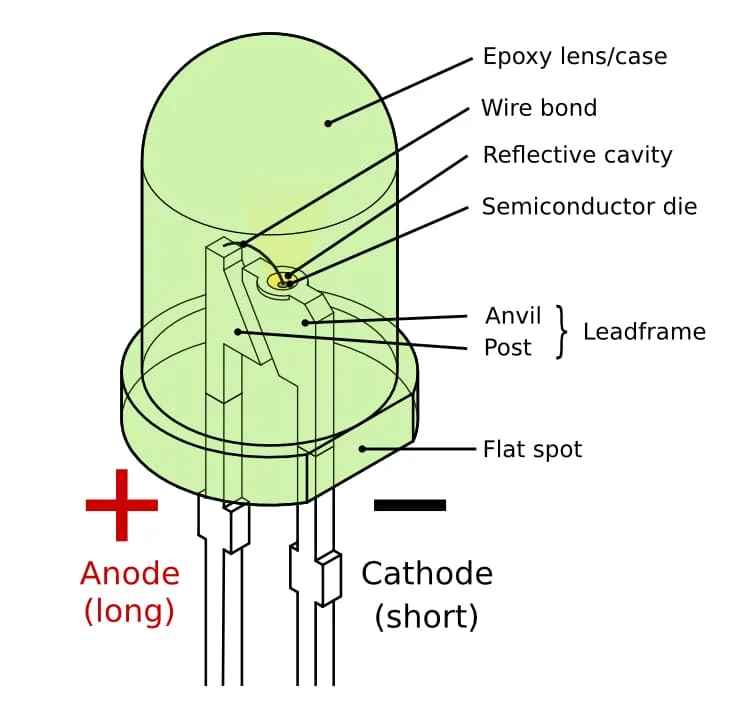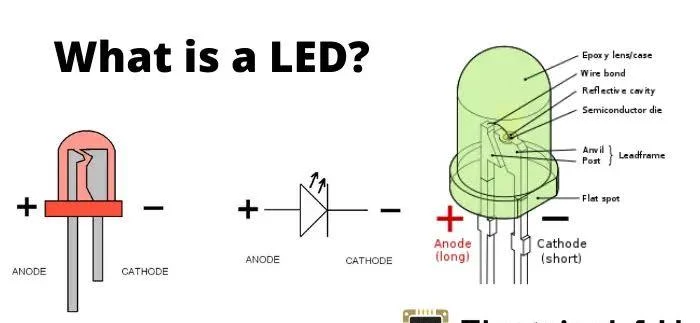A Light Emitting Diode (LED) is a special type of semiconductor diode that emits light when an electric current passes through it. Like a regular PN Junction diode, an LED is made by combining p-type and n-type semiconductor materials, but with a key difference — it is made using materials that emit photons (light particles) during the recombination of electrons and holes.
LEDs are widely used in indicators, displays, lighting, and communication devices due to their high efficiency, long life, and low power consumption.
Construction of an LED
An LED is constructed using a semiconductor material that is positively (p-type) and negatively (n-type) doped, just like in a PN junction diode. However, instead of using traditional materials like silicon or germanium, LEDs are made with compound semiconductors such as:
1) Gallium Arsenide (GaAs)
2) Gallium Phosphide (GaP)
3) Gallium Arsenide Phosphide (GaAsP)
These materials have direct band gaps, which means they can efficiently emit light when electrons recombine with holes.
Working Principle of an LED
When a voltage is applied in forward bias (positive to the p-side and negative to the n-side), electrons from the n-region gain energy and move across the depletion layer into the p-region, where they recombine with holes.
What Happens During Recombination ?
When an electron recombines with a hole, it releases energy. In an ordinary diode (like silicon), this energy is mostly released as heat. But in an LED, this energy is released as light — a phenomenon known as electroluminescence.

Summary
A Light Emitting Diode (LED) is a semiconductor light source that works on the principle of electroluminescence. It emits light when current flows in the forward direction. By choosing different semiconductor materials, LEDs can emit light in various colors. Due to their efficiency, longevity, and compact size, LEDs are now a dominant technology in modern electronics and lighting systems.
